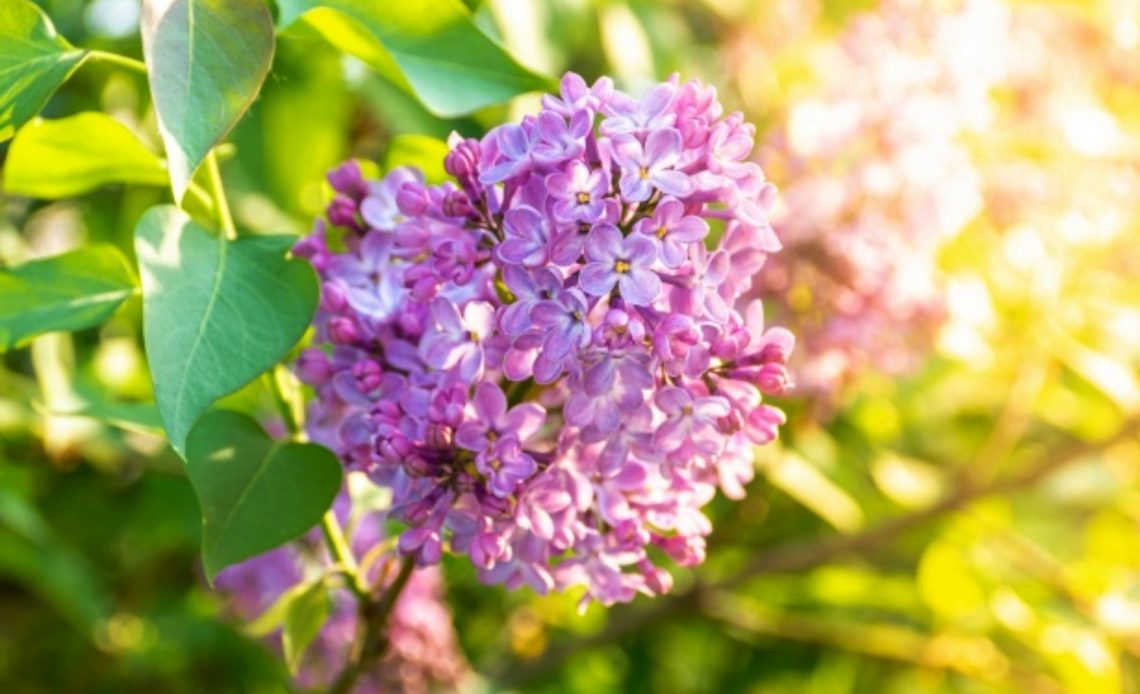

We’re here to help! Wild Yards is a completely free website that is 100% dedicated to helping you create a wildlife-friendly, sustainable yard. Read more
WildYards is reader-supported. When you buy a product through a link on our site, we may earn a comission. Every product is independently selected by our (obsessive) editors and our reviews are unbiased and objective. Read more about our mission or our privacy policy.
Beautiful, fragrant, and fast-growing, to boot, it’s no wonder lilacs are so popular. These plants are incredibly easy to care for and come in a variety of colors, including blue, purple, pink, red, and white. While lilacs are usually a breeze to care for, like any other plant, they’re not without their problems. If you notice some of your lilac leaves curling, it’s time to take a closer look at the plant to determine what’s going on.
Lilac leaves can curl for a variety of reasons. Powdery mildew and other diseases can contribute to this phenomenon, but insect infestation can result in unhealthy foliage as well. Insufficient water intake and nutritional deficiencies can also result in abnormal leaves.
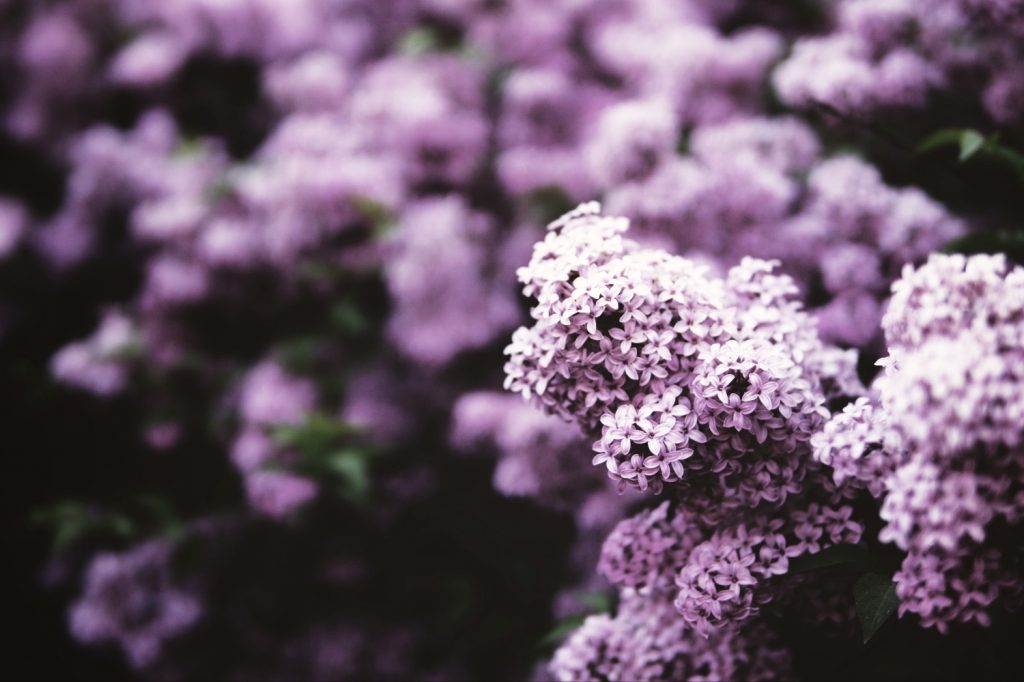
Why does it matter if lilacs develop curled leaves?
While you may not necessarily care if your lilacs have curled leaves from an aesthetic perspective, curled leaves are a sign that something is amiss. When your lilacs develop curled leaves, it’s the plant’s way of letting you know that something is wrong. The quicker you notice the curling leaves, the sooner you can address the problem, and the better the plant’s chances of survival.
What causes lilac leaves to curl?
Curled lilac leaves are a sign of an underlying issue, but determining just what that issue is will require a closer inspection of the plant. To determine what’s going on with your lilacs, take a good look at the plant and the surrounding soil. Be on the lookout for the following issues.
Insect infestations
Overall, lilacs are fairly pest-resistant. While they do attract pollinating insects, including bees and butterflies, they don’t often fall victim to damaging bugs. However, there are several types of insects that are known to feed on lilacs, including leaf miners. This group of insects includes a variety of flies and moths whose larvae feed on the lilac’s foliage.
Leaf miners can have a devastating effect on a plant. After hatching, these bugs burrow into living leaf tissue, leaving white trails behind them. These bugs use their silk to sew damaged leaves together, creating a makeshift cocoon for protection as they eat away all parts of the leaf, leaving only the skeletal veins behind. If your lilac has a leaf miner problem, and if the issue is widespread enough to affect the majority of the plant, it could prove fatal.
Of course, leaf miners aren’t the only insects that can compromise the health of your lilacs. The lilac borer, a wasplike clearwing moth, drills holes into the lilac’s trunk. This process causes the plant to lose branches and wilt in hot weather, but it doesn’t cause the plant’s foliage to curl.
The solution:
If your lilac’s leaves are curling due to an insect infestation, the easiest way to combat it is by whipping up a homemade insect repellent. A mixture of vinegar and water is usually enough to repel any bugs that might find your ornamentals appetizing. Essential oils, garlic, onion, and other pungent substances can also be added to make the repellent more repulsive to any nearby bugs.
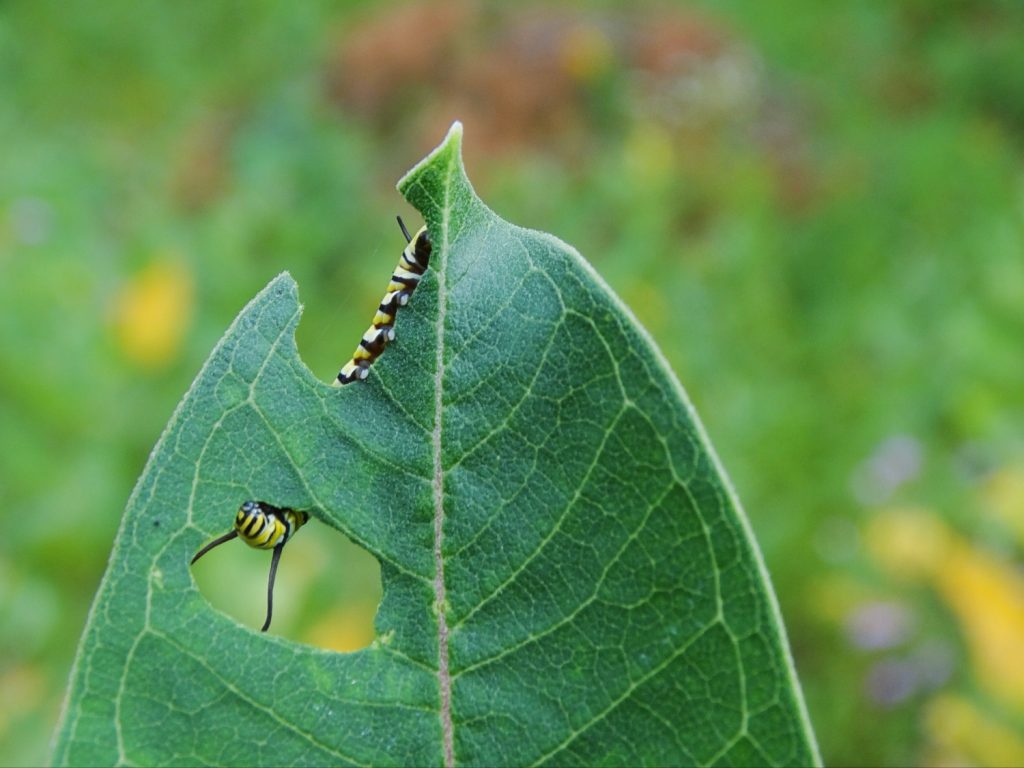
Powdery mildew
Fungal infections, particularly powdery mildew, can do some serious damage to the plant’s foliage. Powdery mildew is thought to be caused by high humidity and water droplets staying on the plant’s foliage for prolonged periods. However, research suggests that powdery mildew actually thrives in dry conditions and moderate temperatures.
Whether powdery mildew is the result of too much water or not enough, it can still cause harm. Look for leaves coated in a white or gray powder, especially at the base of the plant. The more widespread the infection, the more leaves will be infected.
Powdery mildew is especially common in plants that don’t receive enough sunlight. The fungus grows best on the top side of the leaves, and can easily be rubbed off with the tips of your fingers. Infected leaves may develop brown scaly scabs. Leaves that have been infected for a long time may turn black and fall off.
The solution:
The treatment for powdery mildew is pretty simple. Simply mix 1 tablespoon of baking soda and ½-teaspoon of non-detergent dish soap into 1 gallon of water. Stir the mixture well and spray it onto the lilac’s foliage, coating the entire surface of the plant, including the undersides of the leaves.
Bacterial blight
Bacterial blight is a spore that lives in the soil and decaying organic materials. This spore can enter a wound in the lilac’s bark and infect the plant. Symptoms of bacterial blight include dark green and brown spots appearing on foliage. Young leaves begin to twist and curl while flowers turn black and fall off. Bacterial blight is most commonly observed in spring during the rainy season.
The solution:
If your lilacs are suffering from bacterial blight, you need to act quickly by pruning it aggressively. Remove all diseased parts from the plant. Prune at least 12 inches below any branches showing signs of infection, and be sure to clean your pruning shears with diluted bleach between each cut to prevent the disease from spreading.
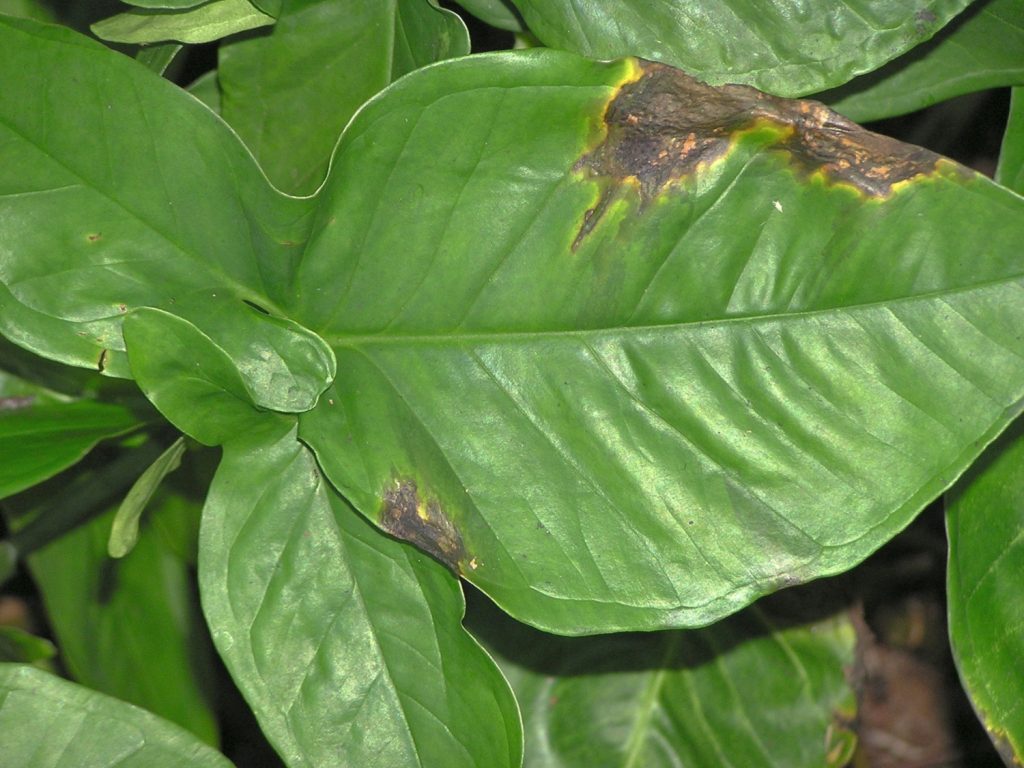
Insufficient water intake
When any plant, lilac or otherwise, doesn’t receive enough water, its leaves may curl upwards due to hydration loss. This effect may not happen immediately, though. First, the leaves will wilt. But, not too long afterward, if the plant doesn’t get the hydration it needs, its leaves will curl and shrivel, turn brown, and fall off.
The solution:
Water your plants more often! If your lilac’s foliage is wilting, curling, turning brown, and falling off, your plants are most likely drying up. Check the soil surrounding your lilacs regularly by sticking your index finger 1 or 2 inches into the ground. If the soil feels dry and powdery, give your lilacs a generous watering. Be sure to water your lilacs deeply at least once a week with a gardening hose. If your lilacs are drying out too quickly in between waterings, apply a thick layer of wood chip mulch at the base of the plants to prevent rapid moisture loss.
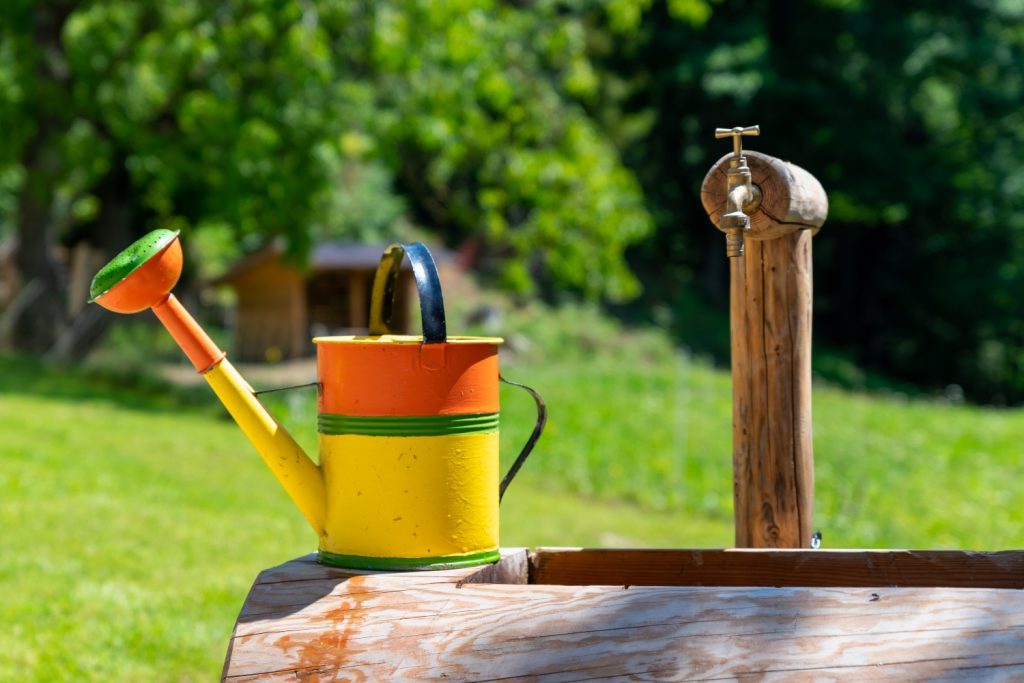
Excessive heat and/or too much sunlight
Similar to the previous issue, sometimes when plants get too hot, they drop leaves to try to conserve moisture, even if they’re getting enough water otherwise. While lilacs perform best when planted in full sun, in warmer growing zones, if the plants receive too much sunlight, they may drop some leaves. But, before their leaves fall, they may first curl.
The solution:
If your lilacs are suffering from too much sunlight, it’s time to move them to a shadier location. Use our handy guide for transplanting plants without killing them to improve their chances of survival during the move. If your lilac plants are too large to move, consider placing an arbor nearby and growing passionflower vine, morning glory, or even watermelon along it to provide your lilacs with some quick shade.
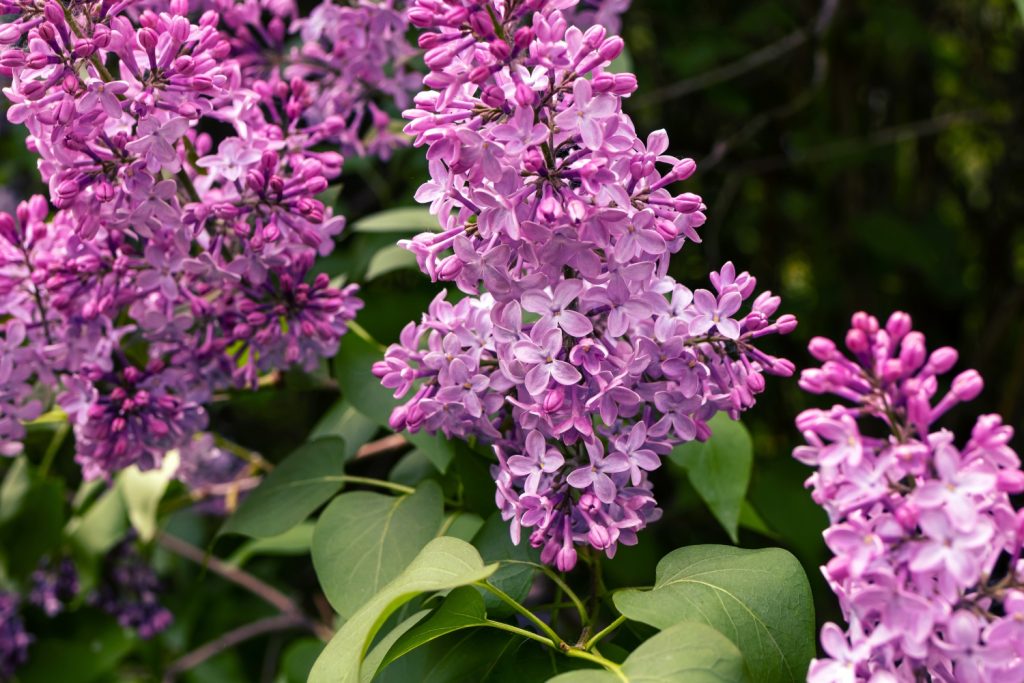
Nitrogen deficiency
Nitrogen plays a critical role in plant health by aiding in the process of photosynthesis. If the soil is nitrogen deficient, plants won’t have enough to turn sunlight into chlorophyll. The result is sad, anemic-looking leaves. Bright green foliage quickly turns yellow and brown. Leaves seem to dry up and fall off for no reason at all. It’s not uncommon for lilacs that are suffering from nitrogen deficiency so experience curling leaves as well.
The solution:
If your plants are suffering from a nitrogen deficiency, amend the soil with a nitrogen-rich fertilizer, like Nitroform. If you’d rather take an organic route instead of relying on chemical fertilizers, consider applying blood meal or feather meal to raise the nitrogen level in the soil for your lilacs.
Potassium deficiency
Low potassium levels can also cause a plant’s leaves to curl. Like nitrogen, potassium plays an integral part in the photosynthesis process. Potassium regulates CO2 intake, helps plants produce proteins and starches, and even allows plants to become more drought-tolerant. When potassium levels are low, older leaves are usually the first to show it. The edges of the leaves burn, turning brown and dying. The margins of the leaves turn yellow with veins remaining green. Eventually, the leaves begin to curl before drying up and falling off.
The solution:
Wood ash, coffee grounds, banana peels, and manure can be used to restore potassium levels in the soil. Eggshells and tea leaves also work well, as do alfalfa pellets, such as those sold for livestock at most feed stores. But, if you do choose to use alfalfa to improve potassium levels for your lilacs, be careful. Deer love alfalfa, and may nibble on your lilacs, too, if they get the chance!
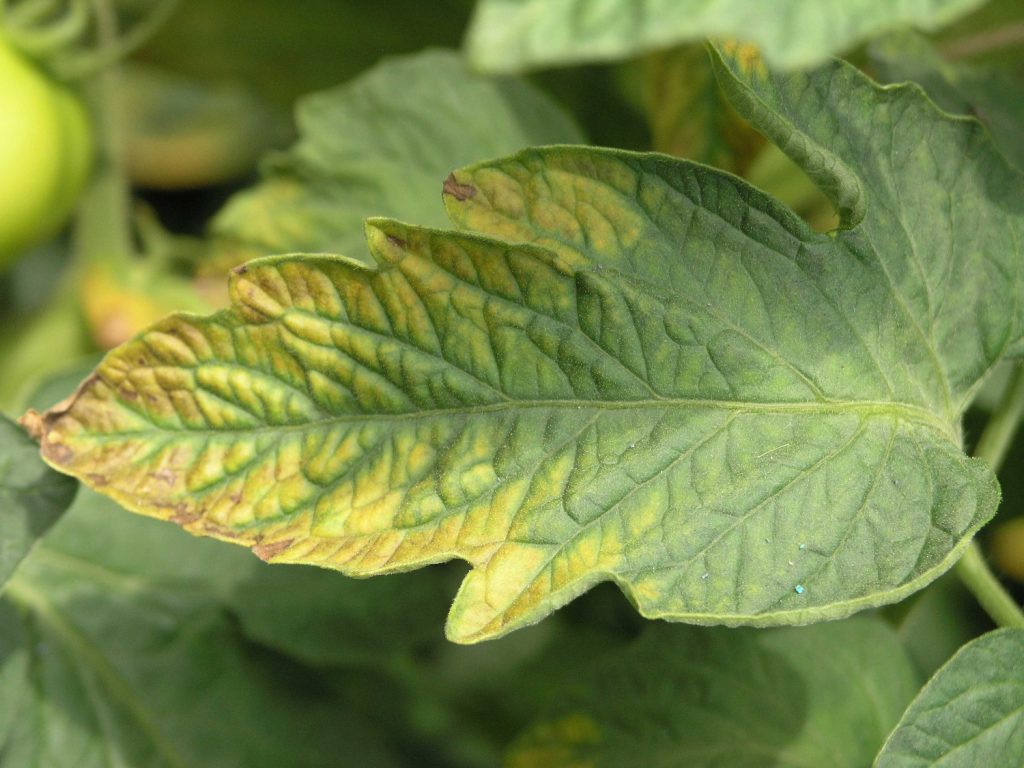
Should you remove curled leaves from your lilacs?
If your lilac’s leaves are curling due to bacterial blight, then it’s best to remove them, along with other parts of the plant that are showing signs of disease. Otherwise, there’s really no reason to remove curled leaves. Leaves that have curled, but are still green and supple may recover as the plant regains its health. Obviously dead leaves can be removed from the plant to improve its appearance, but this is not critical to improving the lilac’s health.
Overall, curled leaves are a small sign of a bigger problem. Once you identify the problem and treat the plant appropriately, it won’t take long for healthy new foliage to emerge and take the curled leaves’ place.

Hello and happy spring. I have several lilac plants in a row. There is one I particular that has curved leaves, it did last year as well. It isn’t thriving like the others. It’s early in the season. There is no sign of pests or powdery mildew. I can’t find any answers. Could it be a vascular issue? All other bushes are doing fantastic.
Hi Jamie! That’s quite the conundrum, but there are several things you can do to try to improve your lilac’s health. First, make sure the plant is getting the exact same amount of sunlight, water, and nutrients as the others. If all of the plant’s care requirements are being met, then reconsider an insect infestation. Even though you don’t see any insects on the plant, aphids and spider mites can be microscopic. Try hosing the plant off, being sure to rub the leaves gently as you do to break up any eggs or webbing. Once the plant is dry, apply a homemade insecticide to the foliage, especially under the leaves. If bugs are causing the problem, the plant should improve in days to weeks. If that doesn’t resolve the issue, the plant could be diseased. Check out this link to determine what your lilac is suffering from (a vascular issue or something else) and whether it can be treated, or should be uprooted and replaced. Thanks for your question, and good luck gardening!
It could be lack of water that is causing the leaves to curl if you can find no bugs, etc. Check the soil several inches deep. I had the same problem.